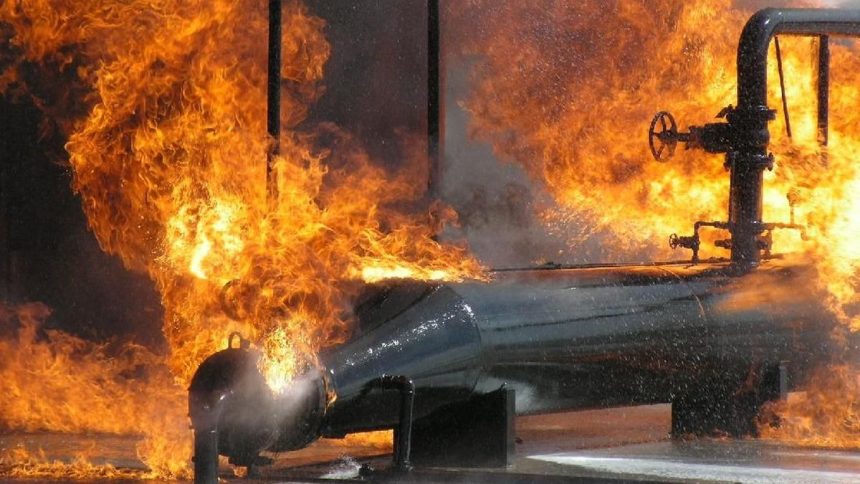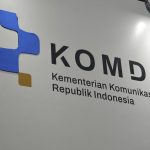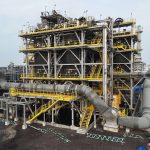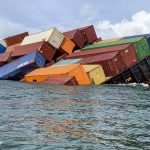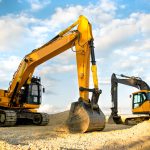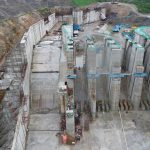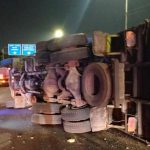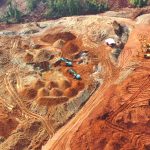One quiet night on the coast of Morowali, a blaze suddenly shattered the silence. From a distance, the sky turned red, and small booms sounded like repeated explosions. Workers ran, sirens blared, and everyone knew one thing: The smelter caught fire.
The next morning, news of the incident trended across Indonesia. Social media was filled with videos from residents, industry analysts debated the cause, and the market reacted sharply as the nation’s downstream nickel production suffered major disruptions.
Behind the media frenzy and public scrutiny, a harsh reality emerges—losses reach trillions of rupiah, and most of them are not adequately covered by insurance.
Stories like this aren’t fiction. They’re real. And they serve as a stark warning to all companies operating within the Danantara ecosystem, especially those managing various projects.strategic downstreaming.
The question is:
Is your company prepared if a similar incident occurs tomorrow morning?
Lessons from Morowali: The Risk of Downstreaming Is Not a Question of “If,” But “When”
Indonesia’s downstream industry is accelerating rapidly. Nickel smelters, battery factories, tin refineries, green industrial areas, and supporting logistics such as jetties and power plants continue to grow in locations such as:
- East Halmahera
- Morowali
- Konawe
- Weda Bay
- Batam
- Balikpapan (IKN support)
However, this acceleration is accompanied by unavoidable risks:
- Factory fire
- Furnace or boiler explosion
- Power supply disruption
- Earthquakes (especially Sulawesi and Maluku)
- Extreme weather—storms, high waves, lightning
- Large-scale work accidents
- Damage to jetty & logistics infrastructure
At the level of a large industry like Danantara, the losses are not just billions—but:
- production stops
- failed export contract
- supply chain disruption
- business reputation is at risk
- licensing and compliance can be problematic
Therefore, risk management cannot be “as is.” It must be elite, precise, and designed by experts.
Comprehensive Risk Analysis for Downstream Industries Under Danantara Management
The following is an overview of the logical and real risks for each downstream industry category:
- Smelter & Refinery (Nickel, Tin, Copper, Alumina)
Main Risks:
- Furnace explosion
- Electrode fire
- Transformer / power supply damage
- Furnace cracking
- Overheating pada material charge
- Earthquake damages steel structures
- Cooling system failure
Impact:
- Long shutdown (the biggest loss is not the building—but the cessation of production)
- Critical engine failure that is difficult to replace
- Delay in delivery to global buyers
- Downstream Industrial Estate
Main Risks:
- warehouse fire
- Power grid damage
- Sudden flood
- Heavy equipment traffic accidents
- Industrial water supply disruption
- Jetty, Logistics Terminal, & Port Conveyor
Main Risks:
- Ship collision
- Extreme weather—high waves
- Storm surge
- Conveyor damage due to overload
- Landslide in the harbor cliff area
- Supporting Power Plants (PLTU/PLTS/PLTMG)
Main Risks:
- Turbine breakdown
- Boiler explosion
- Transmission system disturbance
- Lightning – especially in the Sulawesi & Maluku regions
- Human error in maintenance
- Supporting Infrastructure for Downstream Processing
Including:
Warehouse, workshop, heavy equipment, storage tank, fuel farm, office.
Main Risks:
- Fire
- Theft
- Vandalism
- Earthquake
- Lightning
- Building structure failure
Ideal Insurance Coverage Recommendations for Danantara
Not all insurance is suitable for the downstream industry. It requires a specific design that covers real-world risks.
Here are the packages that should be standard:
- Property All Risks (PAR)
Protect buildings, machinery, fixed assets and production facilities.
Must be expanded with:
- Earthquake (EQ)
- Tsunami
- volcanic eruption
- Storms & hurricanes
- Sabotage & terrorism
- Machinery Breakdown (MB)
To protect critical machines such as:
- Boiler
- Turbine
- Transformer
- Compressor
- Furnace
- Refining equipment
- Business Interruption (BI)
This is the most vital guarantee.
It pays.financial losses due to production stoppages.
Without BI, downstream losses could soar to trillions of rupiah.
- Construction/Erection All Risks (CAR/EAR)
For smelter expansion projects, new jetties, or factory construction.
- Public Liability & Industrial Special Liability
To protect against third party claims resulting from:
- injury
- property damage
- incidental pollution
- Marine Cargo & Stock Throughput (STP)
Protecting the movement of materials, including:
- ore
- coal
- ferronickel
- chemical material
- valuable spare parts
- Directors & Officers Liability (D&O)
Protecting Danantara management from increasingly complex lawsuits.
- Comprehensive General Liability (CGL)
Mandatory for large industrial areas.
Why Insurance Coverage Should Be Designed by Brokers—Not Direct Insurance Companies
Many companies take policies directly to insurance companies because they think it is quicker or cheaper.
However, there are 3 big problems:
- Not accepting comparisons
Insurance companies only offer their own products, not the best on the market.
Brokers like L&G actually negotiate with dozens of global insurance and reinsurance companies.
- No defense at claim
When a large claim occurs, the insurance company has an interest in:
- limit payments
- looking for wording gaps
- tighten interpretation
The broker acts as a 100% representative of the client, not the insurer’s representative.
- No engineering review & risk assessment
For complex downstream industries, it is necessary:
- audit risk
- hazard mapping
- PML/MPL calculation
- protection recommendations
- wording negotiation
This is not done by insurance companies.
But L&G did it.
L&G Insurance Broker: A Strategic Partner for the Downstream Industry
L&G is no ordinary broker.
L&G has a strong track record in the following sectors:
- 2×50 MW Timor-1 PLTU Project (USD 240 million)
- Jogja–Bawen Toll Road Project (USD 300 million)
- Heavy equipment claim of Rp 17 billion paid in full
- Handling large mining companies & heavy equipment
- Handling logistics, port facilities, supply chain
Why is this important for Danantara?
Because L&G is proven:
- Understanding heavy industry risks
- Understand the character of local & global insurers
- Can negotiate with top tier reinsurers
- Have a strong claims team that can “fight” for the client’s interests
- Not biased towards any insurance company
Real Case Examples: Fires, Accidents, and Natural Disasters that Destroy the Downstream Industry
Here are some major incidents that serve as lessons learned:
- Smelter Fire – Morowali (2024)
- Losses: trillions
- Shutdown: months
- Impact: global supply is disrupted
- Extreme Weather – Jetty Damaged in Sulawesi
- Conveyor broken
- Ore cannot be sent
- The repair costs are very expensive
- Not all are covered by the policy (many have incorrect wording)
- Boiler Explosion – Heavy Industry Plant
- Fatalities
- Severe damage
- Critical machines are not covered due to weak wording.
- Major Earthquake – Palu & Nabire
- Warehouse collapses
- Damaged infrastructure
- Many companies without extended “earthquake cover” → claims rejected
- Work Accidents – EPC Projects
- Crane collapses
- Heavy equipment machine totally damaged
- Without proper CAR/EAR → losses are borne by the insured
The Role of an L&G Broker in Claims: From Negotiation to Payment
L&G oversees claims from start to finish with the following processes:
- Internal investigation
- Evidence documentation
- Facing the loss adjuster
- Negotiation of wording and liability
- Emphasis on insurers & reinsurers
- Follow-up until payment is complete
Clients are not left behind like with direct policies.
L&G has proven this:
heavy cargo equipment claim of Rp. 17 billion
paid in full even though the case is complex.
Action Steps for Danantara: Start Today
To ensure all Danantara projects are maximally protected:
- Conduct a comprehensive risk audit. Identify risks per location.
- Review all current policies. Ensure the wording does not potentially deny claims.
- Use an experienced broker. Not an agent, not a direct agent.
- Use L&G as your technical and claims consultant. L&G is ready to assist with in-depth analysis.
- Ensure quality insurers and reinsurers. Don’t be tempted by low premiums.
Conclusion: Insurance is not an expense, but a shield for downstream business.
Downstreaming is the future of Indonesia.
And Danantara is a key player.
But without the best risk management and insurance design, all major investments can be destroyed overnight—like the story of Morowali.
Because of that:
The best insurance is not just a policy.
It is strategy, design, negotiation, and mentoring—which only a professional broker like L&G can provide.
If Danantara wants to run faster, safer, and stronger, then one strategic step must be taken today:
Use the best insurance broker. Use L&G Insurance Broker.
Disclaimer
This article is intended for general educational purposes regarding risk management and insurance in the downstream industry. The information provided does not constitute legal advice or a guarantee of a specific policy. Each company is advised to consult with a professional insurance broker for analysis and recommendations tailored to its specific needs.
—
DON’T WASTE YOUR TIME AND SECURE YOUR FINANCIAL AND BUSINESS WITH THE RIGHT INSURANCE.
HOTLINE L&G 24 JAM: 0811-8507-773 (CALL – WHATSAPP – SMS)
Website: lngrisk.co.id
Email: halo@lngrisk.co.id
—


